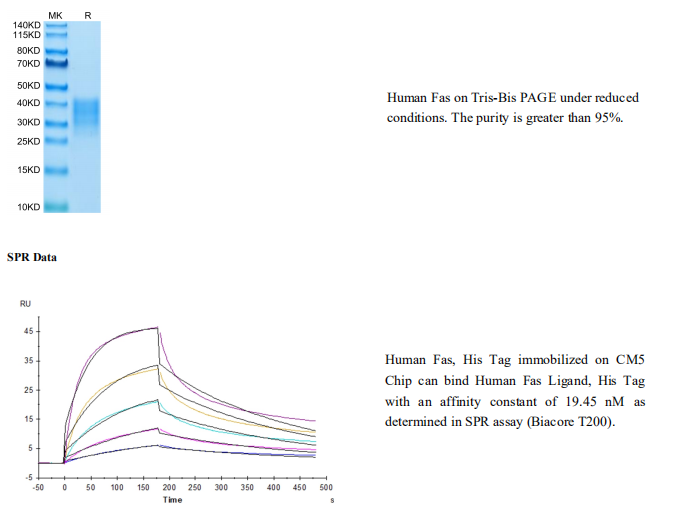Fas (fibroblast associated; also known as APO-1 or CD95) is a member of the death receptor subfamily of the TNF receptor superfamily and is designated TNFRSF6. The human Fas precursor is 335 aa in length, and contains a 25 aa signal peptide, a 148 aa extracellular domain (ECD), a 17 aa transmembrane sequence, and a 145 aa cytoplasmic region. The ECD possesses three cysteine-rich TNFR repeats, while the cytoplasmic region contains one death domain (DD) that is required for the transduction of apoptotic signals (4). Human Fas ECD shares 55%, 58% 62% 63% and 64% aa sequence identity with mouse, rat, feline, bovine and porcine Fas ECD, respectively. A human Fas isoform of 314 aa that lacks the transmembrane sequence is secreted by resting lymphocytes, while isoforms of 149, 132, 103 and 86 aa that also lack the DD and show substitutions for parts of the TNFR repeats are less prominently expressed. All five isoforms block the extrinsic apoptosis pathway induced by Fas ligand binding. Fas ligand (FasL; also TNFSF6) is a type II transmembrane protein that belongs to the TNF family and is expressed on activated T-cells, NK cells, and cells found in immune privileged sites. Alternatively, FasL is also shed as a soluble form. Engagement of Fas induces oligomerization of preformed Fas trimers. This activated receptor complex recruits the adaptor molecule FADD to form the Death-Inducing Signaling Complex (DISC). Upon activation, caspases in the DISC initiate the apoptotic signaling cascade. Fas is prominent in epithelial cells, hepatocytes, activated mature lymphocytes, virus-transformed lymphocytes and tumor cells. It is an essential mediator in the activation-induced death of T lymphocytes that terminates the immune reaction.
高纯度、高活性、低内毒素、高批间一致性
产品数据
Tris-Bis PAGE

-25 ~ -15℃保存,收到货之后有效期1年。 复溶后, 无菌条件下,-85 ~ -65℃保存,3个月有效期。





